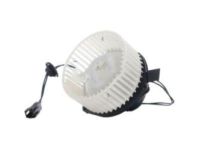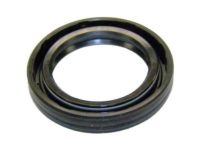
Why choose MoparPartsGiant
- Fast Delivery
Your Chrysler Imperial deserves only Chrysler Imperial genuine parts from MoparPartsGiant.com. There's zero risk involved when buying from us because all our Chrysler Imperial auto parts are expedited directly from authorized dealers and backed by the manufacturer's warranty. For years, we've been the #1 Chrysler Imperial online parts store. Interested in faster shipping? We offer expedited shipping on corresponding orders!
- Dedicated Service
Our outstanding customer service team is here to help you by email, live chat, or phone call with any inquiries regarding your purchase. Dedicated representatives are standing by to assist you with your shopping needs. With a complete Chrysler Imperial parts catalog and a full selection of inventory, your parts are ready to be expedited anywhere in the nation without delays.
- Unbeatable Prices
For any genuine Chrysler Imperial parts you need for standard maintenance or repair, we carry them. With our unbelievably low prices on Chrysler Imperial parts, you won't go anywhere else for Chrysler Imperial parts. We are your one-stop shop for Chrysler Imperial parts without breaking the bank!
Popular Genuine Chrysler Imperial Parts
- Engine Parts View More >
- Electrical Parts View More >
- Fuel Parts View More >
- Body - Sheet Metal Except Doors Parts View More >
- Cooling Parts View More >
- Steering Parts View More >
- Brakes Parts View More >
- Transmission Parts View More >
- Suspension & Drive Parts View More >
- Exhaust Parts View More >
- Heater & Air Conditioning Parts View More >
- Body - Doors And Related Parts View More >
Shop Genuine Chrysler Imperial Parts with MoparPartsGiant.com
The Chrysler Imperial, launched in 1926, has been a symbol of luxury and prestige throughout its lifespan, favored by celebrities, government officials, and royalty alike. Known for its unique scalloped hood and radiator shell, it has seen several updates over its rich history. Initially, it was equipped with a slightly larger-than-standard 4.7L 6-cylinder engine that delivered 92 brake horsepower. In 1931, it was revamped with a new 6.3L 8-cylinder Chrysler engine, featuring a Stromberg Model DD-3 carburetor. The Imperial included all the trappings of a luxury vehicle, such as dual sun visors, adjustable front seats and steering column, wire-spoked wheels, safety glasses, rust-proof fenders, automatic heater control, and Lockheed-supplied hydraulic brakes. In 1990, the model was revived as a top-rank full-size sedan, initially powered by a 3.3L EGA V6 engine producing 147 horsepower, replaced by a larger 3.8L V6 engine generating 150 horsepower in 1991, paired with a 4-speed automatic transmission. The Imperial featured anti-lock brakes, a driver's side airbag, cruise control, a unique vinyl roof, and hidden headlights. It was supported by the "Crystal Key Owner Care Program", offering extended warranties and a 24-hour toll-free customer service hotline. The Chrysler Imperial, synonymous with comfort, quietness, and dignity, was discontinued in 1993 and replaced by the new LH platform sedans.
The Chrysler Imperial, particularly the 1993 model, frequently presents two prominent issues based on multiple reports: a faulty Body Control Module (BCM) and problems related to melted wiring. The BCM is an essential component in these vehicles as it regulates a wide range of electronic systems, including dashboard warning lights, windshield wipers, power windows, air conditioning, immobilizers, central electronic locking, mirror adjustments, and keyless entry. Common symptoms of a malfunctioning BCM include the radio playing continuously when the door is opened, unresponsive automatic doors and remote keys, an illuminated check engine light, and inaccurate 'miles to empty' readings after refueling. Such malfunctions can lead to erratic electronic behaviors, unstable high-speed driving, hindered acceleration, and fuse problems. While these issues don't necessarily impact the basic function of the car, they can be significantly inconvenient. The root causes of BCM failures vary, ranging from mechanical wear and shocks, such as from accidents, to exposure to extreme environments and even liquid damage. When diagnosing these issues, especially in the 1993 Chrysler Imperial, it's crucial to explore other potential culprits like problems with the ignition switch, battery, or circuit disruptions. A thorough check of specific features, like the power seats, horn, and lighter socket linked to fuse #15, can aid in accurately identifying the root problem. Although replacing the BCM might be expensive, it's important to remember that not every Chrysler Imperial will encounter this issue. On a related note, another problem seen in older models, like Roger's 1955 Imperial, is melted wiring leading to ignition issues, including a lack of spark even with a functioning coil. Some attribute potential causes to distributor misconnections or rotor problems, while others spotlight the inherent 6-volt battery system of older Imperials. A well-maintained 6-volt system should operate efficiently; however, any resistance can drastically degrade its performance. Additional challenges with older Imperials include hard starts due to carburetor sludge, malfunctioning chokes, and accelerator pumps. Solutions often revolve around addressing the root cause, such as ensuring proper insulation to avoid heat-induced evaporation in the carburetor, rather than opting for temporary fixes like electric fuel pumps.
Originating directly from Chrysler, OEM parts excel in quality, longevity, and fitment. They undergo severe quality testing, ensuring its safety, durability, and performance that matches your original parts. Are you in search of pocket-friendly OEM Chrysler Imperial parts, like Wiper & Washers And Cylinder & Keys, Body? MoparPartsGiant.com could be your one-stop-shop, providing full line of affordable, genuine Chrysler Imperial parts. They are backed by the manufacturer's warranty and come with a hassle-free return policy, plus a promise of fast delivery. Feel confident in your shopping experience with us!
Chrysler Imperial Parts Questions & Answers
- Q: How to Replace a Blower Motor in a Chrysler Imperial?A: Disconnect the battery negative cable. Remove the glove box. Detach the panel underneath the right end of the dash, which has four fasteners - two screws in front and two sheet metal nuts on the backside. On air-conditioned models, detach the two vacuum lines from the air door actuator. Remove the two sheet metal nuts from the studs on the bottom and detach the rod from the door lever arm. Remove the two sheet metal nuts that secure the actuator to the blower housing. Reach up to the top of the actuator rod, disconnect the rod from the door lever arm, and remove the actuator. Remove all eight mounting screws from the blower housing and remove the housing. Remove the retaining clamp from the fan hub and slide the fan off the motor shaft. Unplug or unsolder the blower motor electrical connector, remove the three motor mounting screws, and pull out the motor. Install the fan on the new blower motor and secure it to the shaft with the retaining clamp. Installation is the reverse of removal.
- Q: How do you replace the front oil seal in 2.5L four cylinder engine on Chrysler Imperial?A: Drain the engine oil, then remove the timing belt and crankshaft sprocket. Raise the front of the vehicle and support it securely on jackstands. Remove the oil pan; note that it is possible to remove the seal without taking off the oil pan if a special seal puller tool is used. Working underneath the vehicle, remove the bolts and detach the oil seal housing. Use a punch and hammer to drive the old seal out of the housing, ensuring not to damage the seal bore by wrapping the tip of the punch with tape. Thoroughly clean the seal bore in the housing and the seal journal on the end of the crankshaft, removing small burrs with emery cloth or 400-grit sandpaper. If a groove has been worn in the seal journal from contact with the seal lip, installing a new seal may not stop the leak, indicating that the crankshaft or the main bearings may be excessively worn, suggesting an engine overhaul is needed. Apply a thin coat of R1V sealant to the surface of the seal bore, lay the housing on a clean, flat work surface, position the new seal in the bore, and tap it into place with a soft-face hammer, ensuring the seal lip faces the proper direction towards the engine. Lubricate the seal lip with multi-purpose grease and apply a 1 mm wide bead of anaerobic gasket sealant to the engine block mating surface of the seal housing. Position the housing on the engine, install the retaining bolts, and tighten them to the specified torque. Reinstall the crankshaft sprocket, timing belt, and related components, then install the oil pan. Check the engine oil level and add oil if necessary. Start the engine, let it warm up, and check for leaks.


















































